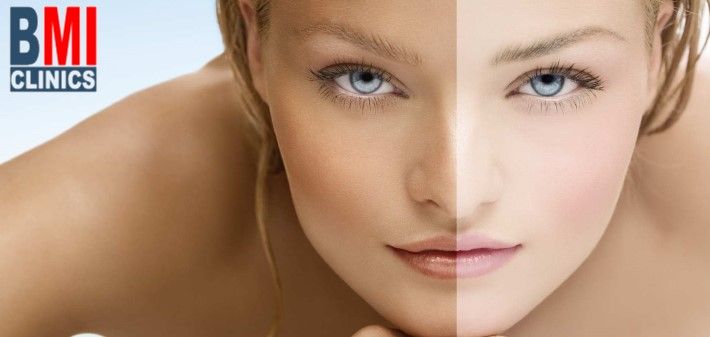Hyperpigmentation is a condition that occurs due to darkening of the pigment responsible for skin color, known as melanin. This condition is mainly characterized by changes in color in parts of one’s skin. Although hyperpigmentation is not life threatening, it damages the skin and is often associated with low self-esteem issues and even depression.
Causes of Hyperpigmentation
Understanding these causes and triggers of hyperpigmentation is very important in determining the right type of treatment to be used and enables one to take measures that can prevent further discoloration. Below are some of the most common causes of hyperpigmentation.
UV Rays
Excessive exposure to the sun can cause hyperpigmentation especially in people with darker skin tones. Usually, melanin absorbs most of the sun’s harmful ultra violet rays but if the skin is exposed to these UV rays for too long, increased melanin is produced. This may cause existing age spots, freckles and darkened skin patches to become darker and more noticeable.
This type of hyperpigmentation is medically referred to as Lentigines and is prevalent in a majority of people above 60 years of age.
Hormonal Changes
Hyperpigmentation can be caused or triggered by natural hormonal changes and hormone treatments in the body, such as changes in estrogen and progesterone levels and thyroid functions. It is very common among pregnant women and those using birth control pills. This type of hyperpigmentation is medically referred to as Melasma.
Although it is more prevalent in women, it can also affect males especially if they are undergoing or have undergone hormone therapy.
Exposure to Some Chemicals, Toxins and Medications
This condition can also be caused by exposure to certain medications, chemicals or toxins, burns, injuries, acne and other skin conditions. This type of hyperpigmentation is known as Post-inflammatory hyperpigmentation (PIH).
It is occurs as a side effect of some medications especially skin care treatments or chemicals such as those used in drawing tattoos.
Stress
Stress has been linked to accelerated aging and many other changes in the body including hyperpigmentation. Stress can suppress immunity and cause health issues, which can further suppress the body’s immunity and leads to accelerated aging.
Studies have also shown that people who are highly stressed often rub their skins, which can cause inflammation. If this happens, the body’s natural s reaction will be to produce more melanin to counter this inflammation.
Poor Nutrition
Nutrition has a significant effect on the appearance of one’s skin. People who consume a lot of alcohol and have poor eating habits are more prone to skin problems including hyperpigmentation compared to people who eat balanced diets and drink plenty of water.
Treatment of Hyperpigmentation
Some types of hyperpigmentation are easily treatable while others are stubborn and usually difficult to treat. Below are some of the most common treatment options used to treat the various types of hyperpigmentation.
DermaPen Micro-needling
Also referred to as skin-needling, DermaPen micro-needling involves using fine surgical needles to penetrate the skin and make microscopic channels in the epidermis and dermis layers of the skin.
Although micro-needling can be alone, it is often used together with Platelet Rich Plasma which is commonly used in regenerative therapies to treat acne scars with very little risk of post treatment darkening or discoloration.
Platelet Rich Plasma (PRP) Therapy
This refers to a type of treatment where platelet rich plasma is used in regenerative therapies to heal various injuries, skin conditions and soft tissues among other conditions. Basically, the blood plasma is enriched with platelets and injected into the area that needs regeneration.
Chemical Peels
This type of treatment involves a topical application of chemical peels containing facial acids on the discolored parts of the skin. This usually stimulates the shedding of dead hyper pigmented skin cells, and induces a controlled wound healing process. Chemical peeling is used to treat Melasma in lighter skinned patients.
Micro Derma-abrasion
Micro-Dermabrasion is a mechanical exfoliation of the dead skin cells as well as the excess melanin. This process involves use of a special device and tiny crystals to remove superficial dead skin cells, which brightens and lightens the appearance of the discolored skin. This treatment is commonly used to treat hyperpigmentation caused by sun damage and post inflammatory skin alterations, in people with darker skins complexions
Laser Therapy
Laser therapy or resurfacing involves a progressive application of selective laser wavelengths to excessively discolored areas to brighten the appearance of the hyperpigmentation without damaging the outer layer of the skin. Laser therapy is often used to treat acne scars, hereditary discoloration and sun-damaged skin.









